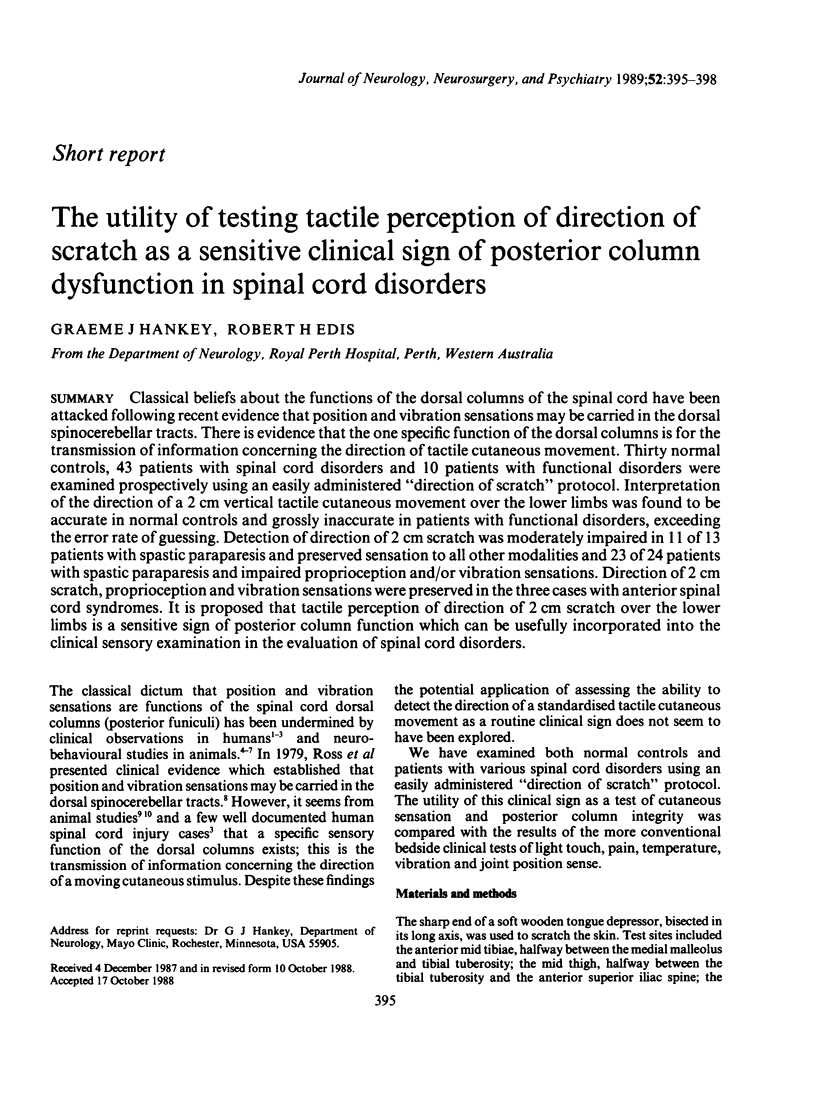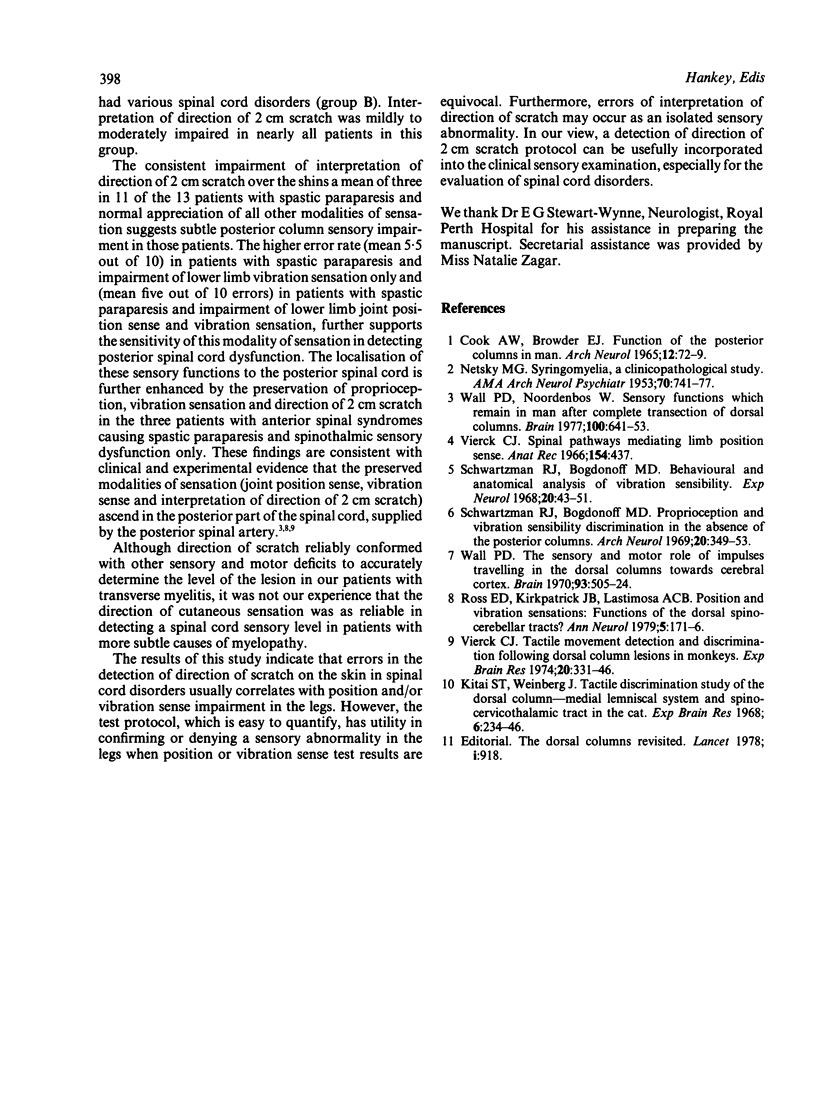Abstract
Classical beliefs about the functions of the dorsal columns of the spinal cord have been attacked following recent evidence that position and vibration sensations may be carried in the dorsal spinocerebellar tracts. There is evidence that the one specific function of the dorsal columns is for the transmission of information concerning the direction of tactile cutaneous movement. Thirty normal controls, 43 patients with spinal cord disorders and 10 patients with functional disorders were examined prospectively using an easily administered "direction of scratch" protocol. Interpretation of the direction of a 2 cm vertical tactile cutaneous movement over the lower limbs was found to be accurate in normal controls and grossly inaccurate in patients with functional disorders, exceeding the error rate of guessing. Detection of direction of 2 cm scratch was moderately impaired in 11 of 13 patients with spastic paraparesis and preserved sensation to all other modalities and 23 of 24 patients with spastic paraparesis and impaired proprioception and/or vibration sensations. Direction of 2 cm scratch, proprioception and vibration sensations were preserved in the three cases with anterior spinal cord syndromes. It is proposed that tactile perception of direction of 2 cm scratch over the lower limbs is a sensitive sign of posterior column function which can be usefully incorporated into the clinical sensory examination in the evaluation of spinal cord disorders.
Full text
PDF



Selected References
These references are in PubMed. This may not be the complete list of references from this article.
- COOK A. W., BROWDER E. J. FUNCTION OF POSTERIOR COLUMNS IN MAN. Arch Neurol. 1965 Jan;12:72–79. doi: 10.1001/archneur.1965.00460250076009. [DOI] [PubMed] [Google Scholar]
- Kitai S. T., Weinberg J. Tactile discrimination study of the dorsal column-medial lemniscal system and spino-cervico-thalamic tract in cat. Exp Brain Res. 1968;6(3):234–246. doi: 10.1007/BF00235126. [DOI] [PubMed] [Google Scholar]
- NETSKY M. G. Syringomyelia; a clinicopathologic study. AMA Arch Neurol Psychiatry. 1953 Dec;70(6):741–777. [PubMed] [Google Scholar]
- Ross E. D., Kirkpatrick J. B., Lastimosa A. C. Position and vibration sensations: functions of the dorsal spinocerebellar tracts? Ann Neurol. 1979 Feb;5(2):171–176. doi: 10.1002/ana.410050211. [DOI] [PubMed] [Google Scholar]
- Schwartzman R. J., Bogdonoff M. D. Behavioral and anatomical analysis of vibration sensibility. Exp Neurol. 1968 Jan;20(1):43–51. doi: 10.1016/0014-4886(68)90123-4. [DOI] [PubMed] [Google Scholar]
- Schwartzman R. J., Bogdonoff M. D. Proprioception and vibration sensibility discrimination in the absence of the posterior columns. Arch Neurol. 1969 Apr;20(4):349–354. doi: 10.1001/archneur.1969.00480100025002. [DOI] [PubMed] [Google Scholar]
- Vierck C. J., Jr Tactile movement detection and discrimination following dorsal column lesions in monkeys. Exp Brain Res. 1974;20(4):331–346. doi: 10.1007/BF00237379. [DOI] [PubMed] [Google Scholar]
- Wall P. D., Noordenbos W. Sensory functions which remain in man after complete transection of dorsal columns. Brain. 1977 Dec;100(4):641–653. doi: 10.1093/brain/100.4.641. [DOI] [PubMed] [Google Scholar]
- Wall P. D. The sensory and motor role of impulses travelling in the dorsal columns towards cerebral cortex. Brain. 1970;93(3):505–524. doi: 10.1093/brain/93.3.505. [DOI] [PubMed] [Google Scholar]


